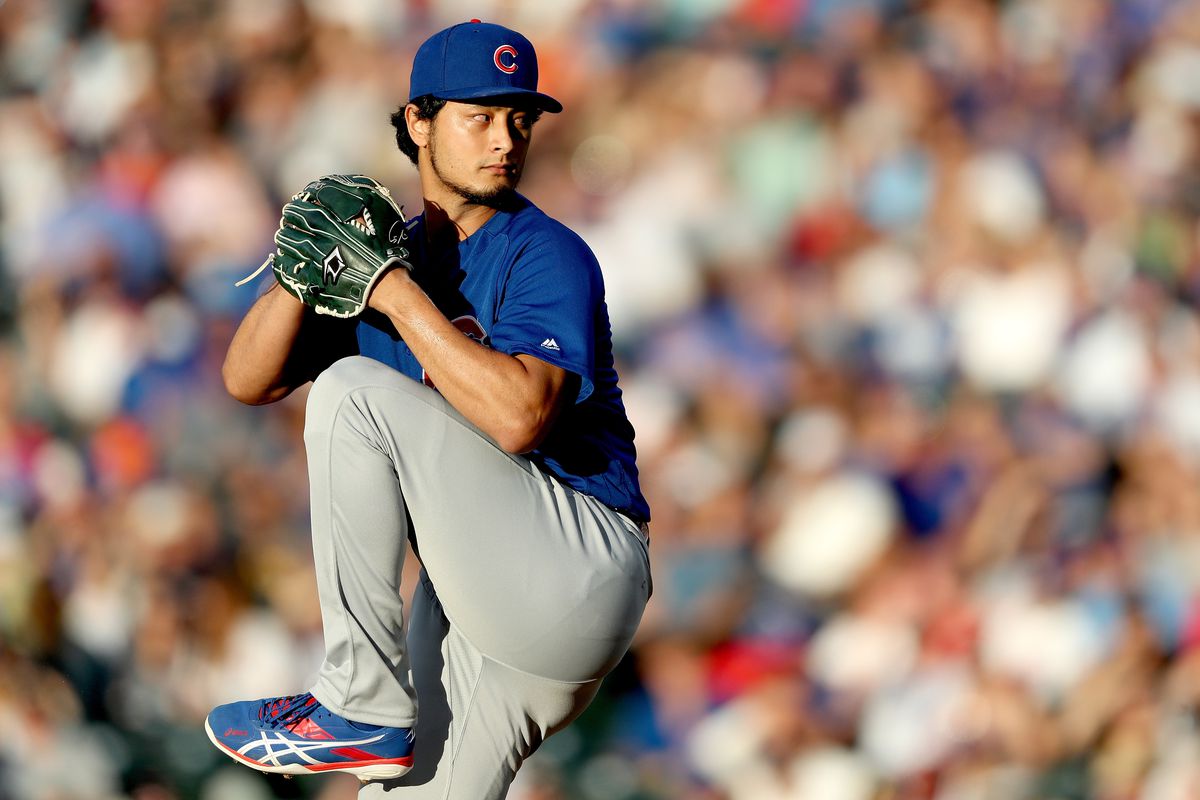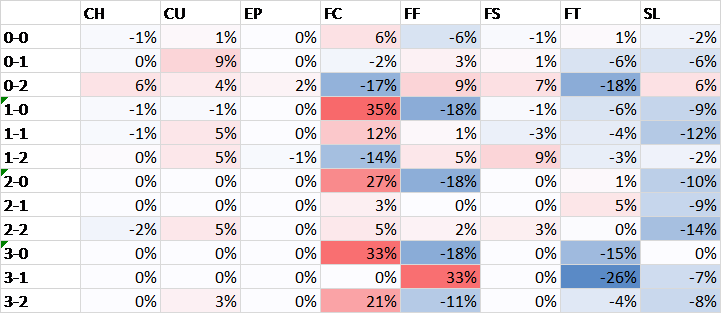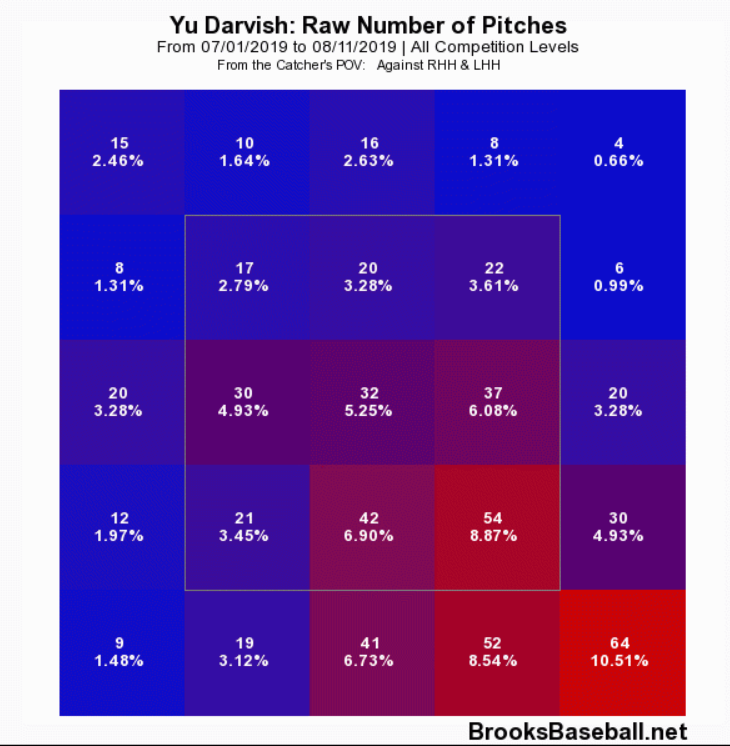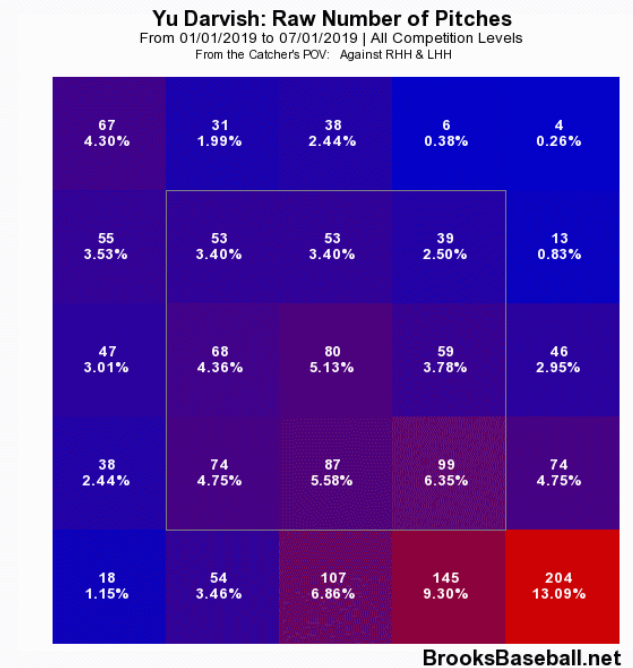Yu Darvish Recent Success Making Up for Lost Time

Yu Darvish signed a 6-year, $126Million deal with the Chicago Cubs before the 2018 season. He proceeded to throw in just 8 suspect games last year as he battled elbow problems and the beginning of the 2019 season left many Cubs fans feeling like they had acquired some sort of rotten right arm that walked far too many. But Darvish appears to be making up for lost time with his last 7 starts.
His most recent start was pretty good – 6 innings, 4 hits, 9 strikeouts, no walks. But of the 4 hits, 3 went over the fence and Darvish (and the Cubs) went home with the loss. It’s more those last two stats that are of interest for diehard Cubs fans. Those fans will remember Darvish’s first 25 games in Cubbie blue, when he had a 2.2 K/BB ratio that was have been among the 10 worst in baseball among starters. Over these last 7 starts, Darvish has 53 strikeouts to just 2 walks. Here, maybe this will help.
A surge like that does not happen by chance. There has to be something at play here. The theory over at pitcherlist.com is that Darvish is simply throwing his cutter more often, which has resulted in a greater number of strikes and an overall better command.
Some of that is fair, but some of that can be chalked up to the pitch selection algorithm’s difficulty discerning the difference between the fastball, slider, and cutter. Brooksbaseball, which uses Pitch f/x data shows no real difference between the pitches, while Statcast data appears to show that the cutter is way more common. Darvish has good feel for each of them, but they tend to blend together.
The part that’s fair is that Darvish is simply throwing more strikes. Note the difference in the pitches in the zone over the last 6 weeks as compared with out of the zone. He’s up to 45% pitches in the zone in his last 7 games, as compared with just 39% over prior to that.
All these stats are great, but they do not expose the underlying shift that has made this leap possible. It’s pretty straightforward really. Victor Caratini is a better defensive catcher than Willson Contreras and has impacted Darvish’s recent performance. Caratini has caught each of Darvish’ last 7 games. The last game before that? Darvish gave up 5 earned in 5 innings.
Caratini, a slightly above average catcher, gets about 2% more strikes called for his pitchers than does Contreras, a guy that the advanced stats do not like. That helps to explain some of the 6% improvement in Darvish’ strike rate of late.
But Caratini also calls different pitches. Per Statcast, he’s been calling about 6% more cutters of late than Darvish threw earlier in the year. 6% is not a lot, but the shift in when those pitches are thrown makes a difference. See the chart below, which shows the recent change in pitch percentage based on count relative to the first 17 games of the year.

The big thing to note in there is how he is now pitching off of the cutter as his primary pitch. When he falls behind, 1-0, which is happening about 10% less often, he’s throwing a cutter 70% of the time. 2-0 is nearly 60% of the time. It may seem like a small shift, but it helps to explain why Darvish is not only walking fewer people, but also getting to far fewer 3-ball counts.
This all lines up from a qualitative standpoint too. Here’s what Joe Maddon had to say in late May: “I just think he has better command of that pitch. I think he has a better idea of where that pitch is going. I think that’s the biggest difference with it. Because of that, it’s been more effective because he can throw it where he wants to. I think that’s the primary difference. “
This is something new for Darvish. It used to be that his best pitch was his slider, but things are different in 2019. It’s the slightly harder pitch that lets his other pitches play up. He commands it better, but he’s also able to deceive hitters a bit more. Working off of the fastball, his cutter, and slider moved differently. By working off of his cutter, his other two primary pitches are more similar. Now, he’s able to deceive with movement in both directions off of his primary offering. Without a changeup for most of his Major League career, this is the first time that Darvish has had a weapon that effectively moves away from lefty hitters.
All in, it’s a welcome shift for Chicago’s $126M man.
-Sean Morash


















